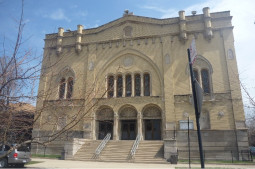<<< back< prevnext >

Article:
Large and Megachurch Appraisal Considerations: Megachurches - A Financial Overview

When we are completing a large or megachurch appraisal, size matters. An appraiser of a large of megachurch needs to consider that these institutions have generally fared better than small churches. Megachurch appraisers should also be cognizant of the somewhat different income and expense ratios relative to smaller churches.
The Leadership Network recently published a 2013 study on the Economic Outlook of Very Large Churches by Warren Bird, Ph.D. These large churches in general appear to have a much stronger financial footing than their smaller counterparts. They indicate that church size was directly proportional to the amount of negative impact in the 2008 recession. The Leadership Network reported that 67% of churches with attendance of 1,000 or less had some level of negative impact, 57% for those with attendances of 1,000 to 1,999 and only 50% for those with attendances of 2,000 or higher. The bottom was hit in 2009, with the financial conditions for larger churches steadily improving since that point.
The study indicated that 70% of churches with 2,000 and more attendance had improved service offerings in 2012 over 2011. This is partially a reflection of growth as 79% of congregations with 2,000 or more grew during 2012.
Church income is typically almost completely dependent upon tithes and offerings. The Megachurches surveyed reported that 96% of their income is a function of congregational giving. For churches with 10,000 and more, congregants provided 99% of the budget and for churches with 1,000 to 1,999, it was 91%.
Interestingly giving per capita goes down with size. The median donation is $74/attendee for church attendance of 1,000 to 1,999, $58 for churches 2,000-2,999, $40 for churches 3,000-4,999, $32 for churches 5,000-5,999, $23 for churches 6,000 to 9,999, and $17 for churches with 10,000 or higher. They note that the giving range can also vary widely by area and the economic strength of the congregation. They also noted an 80/20 rule where 20% of the members tend to give the lion share of the money; about 1/3 of the congregation gives nothing at all.
The average debt for churches with 2,000 members or higher was reported at 66% of the churches annual budget. A CapinCrouse study (a national accounting firm that specializes in not-for profits) found that the median debt per attendee of churches with 2,500 or more attendance was $2,500. The survey also reported that 54% of the megachurches had 2-3 months of working cash in reserve with smaller churches tending to have slightly more.
They also reported that the predominant staffing cost for megachurches is about 50% of the budget. This roughly translated into about one employee per $100,000 of giving or 44 employees for example if there is $4.4 million budget from attendee giving.
The Leadership Network recently published a 2013 study on the Economic Outlook of Very Large Churches by Warren Bird, Ph.D. These large churches in general appear to have a much stronger financial footing than their smaller counterparts. They indicate that church size was directly proportional to the amount of negative impact in the 2008 recession. The Leadership Network reported that 67% of churches with attendance of 1,000 or less had some level of negative impact, 57% for those with attendances of 1,000 to 1,999 and only 50% for those with attendances of 2,000 or higher. The bottom was hit in 2009, with the financial conditions for larger churches steadily improving since that point.
The study indicated that 70% of churches with 2,000 and more attendance had improved service offerings in 2012 over 2011. This is partially a reflection of growth as 79% of congregations with 2,000 or more grew during 2012.
Church income is typically almost completely dependent upon tithes and offerings. The Megachurches surveyed reported that 96% of their income is a function of congregational giving. For churches with 10,000 and more, congregants provided 99% of the budget and for churches with 1,000 to 1,999, it was 91%.
Interestingly giving per capita goes down with size. The median donation is $74/attendee for church attendance of 1,000 to 1,999, $58 for churches 2,000-2,999, $40 for churches 3,000-4,999, $32 for churches 5,000-5,999, $23 for churches 6,000 to 9,999, and $17 for churches with 10,000 or higher. They note that the giving range can also vary widely by area and the economic strength of the congregation. They also noted an 80/20 rule where 20% of the members tend to give the lion share of the money; about 1/3 of the congregation gives nothing at all.
The average debt for churches with 2,000 members or higher was reported at 66% of the churches annual budget. A CapinCrouse study (a national accounting firm that specializes in not-for profits) found that the median debt per attendee of churches with 2,500 or more attendance was $2,500. The survey also reported that 54% of the megachurches had 2-3 months of working cash in reserve with smaller churches tending to have slightly more.
They also reported that the predominant staffing cost for megachurches is about 50% of the budget. This roughly translated into about one employee per $100,000 of giving or 44 employees for example if there is $4.4 million budget from attendee giving.



